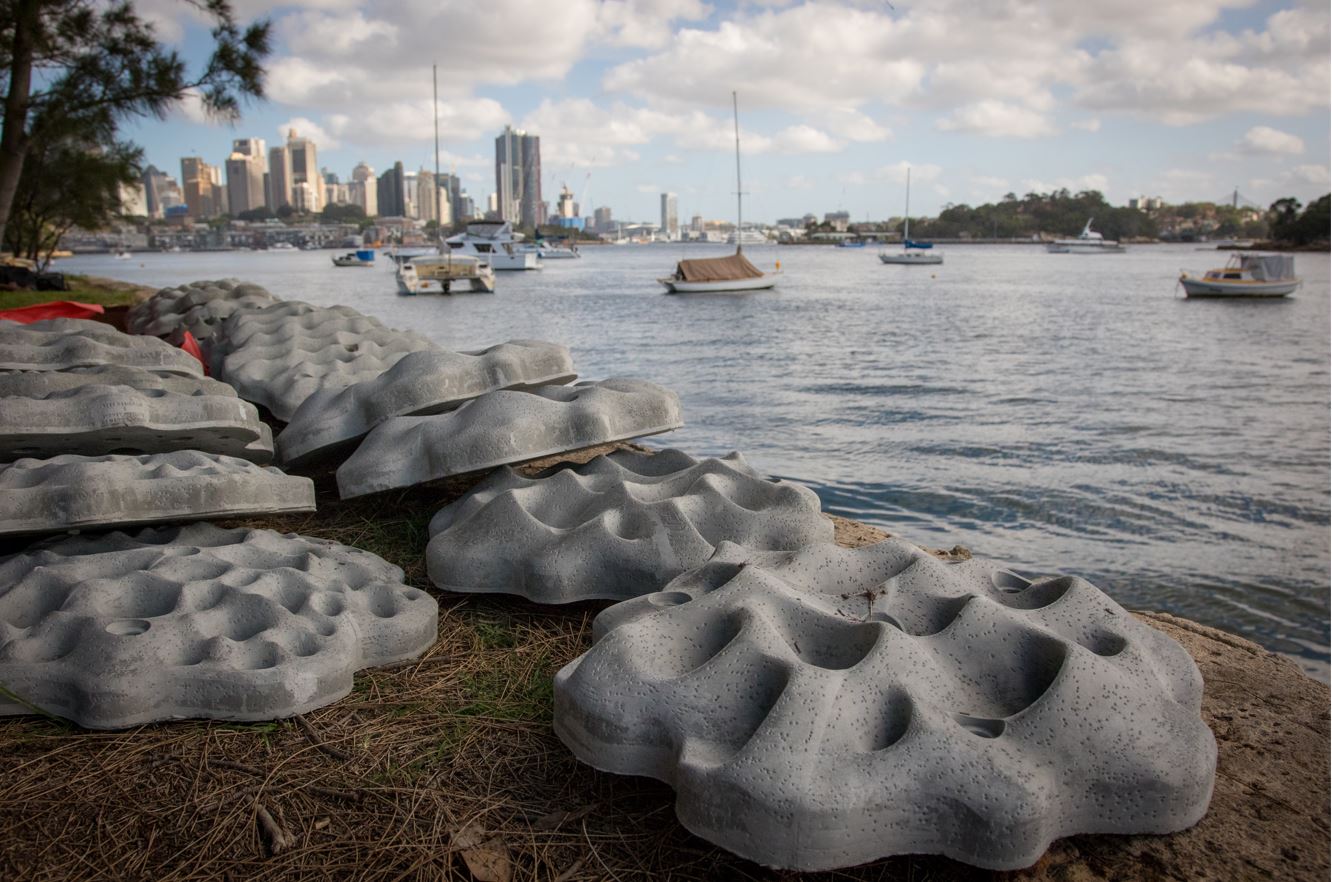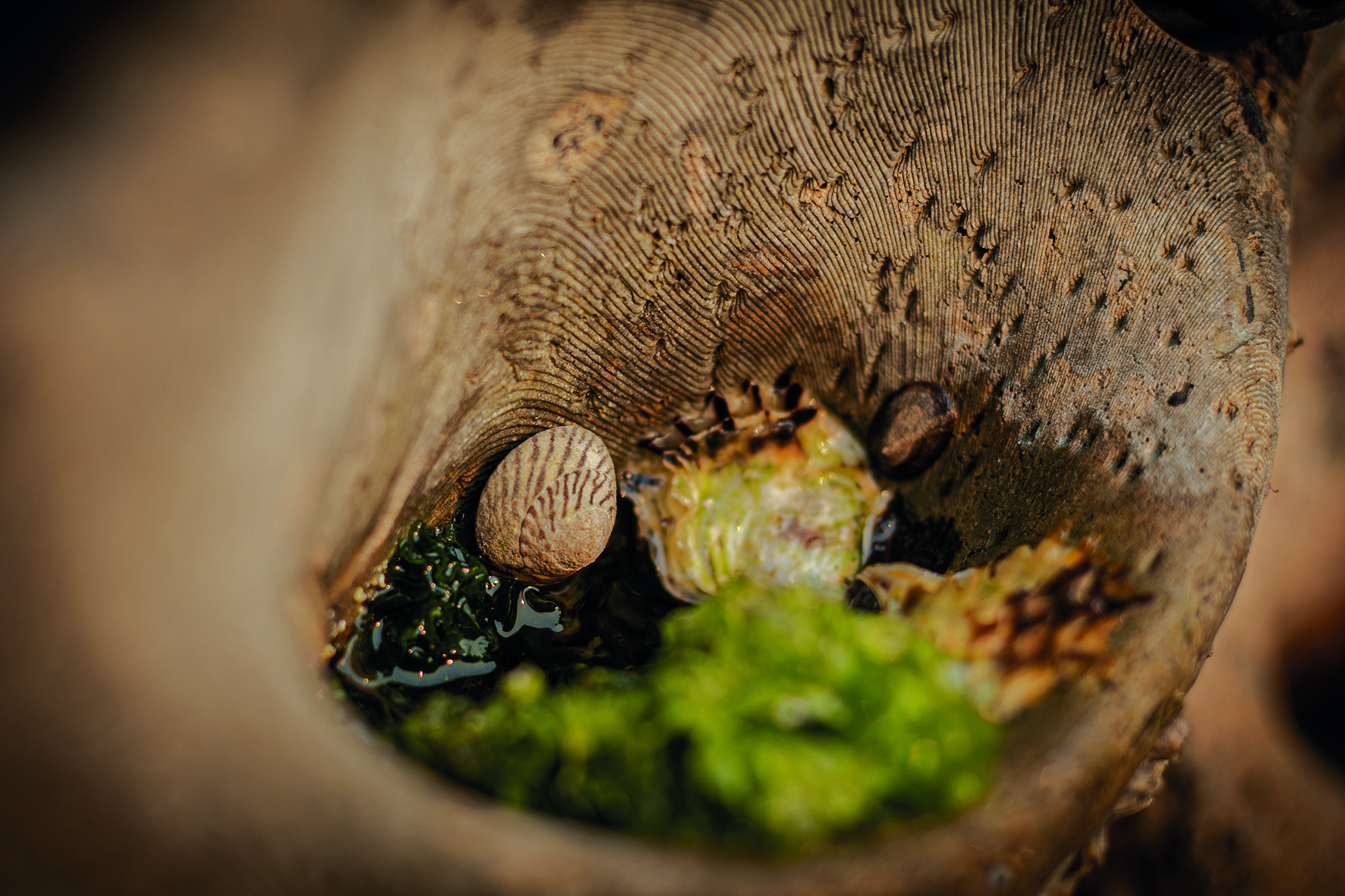Melanie Bishop: Living Seawalls in Sydney, a refuge between the tides

Building "living seawalls" to house marine biodiversity was the big dream of the scientific team at the Sydney Institute of Marine Sciences. Thanks to additive technology, the project has come to life in the heart of the Australian city's harbour. Have the results lived up to expectations? Meet Melanie Bishop, a passionate professor of biological sciences at Macquarie University and one of the three co-directors of this unique project.
INTERVIEW
Sustainability Mag: Last June, you and your team carried out a very special kind of installation, a very ecological wall immersed in Rushcutters Bay… a living seawall. Which ambition lies behind this project?
Mélanie Bishop: The Living Seawalls project is a collaboration between Melbourne-based designer, Alex Goad of Reef Design Lab and our team of scientists at the Sydney Institute of Marine Sciences. It is the culmination of over 20 years of research by ourselves and others on the ecological impacts of marine urban sprawl, and methods to help mitigate its consequences. Marine urban structures are replacing beaches, mudflats, mangroves, saltmarsh, seagrass beds and oyster reefs, with negative biodiversity consequences. Our research is investigating how the design of marine built structures can be modified such that they not only serve their primary intended purpose (e.g. seawalls support reclaimed land and protect shorelines from erosion and inundation) but also provide habitat to marine plants and animals that are ecologically and functionally important.
You report a growing threat to these natural habitats. Do conventional urban structures play a decisive role in the loss of biodiversity?
Yes. Increasingly urban development is sprawling into the sea. As compared to the natural habitats they replace, structures such as seawalls, breakwaters, piers, pontoons and pilings typically support reduced biodiversity and fewer ecosystem services, such as fisheries productivity, maintenance of clean water and carbon sequestration. The relatively flat and featureless surface of marine built structures provide little space for marine plants and animals to live, and those that do find space struggle to find refuge from predators and environmental stressors such as the midday sun or waves. The poor habitat quality of marine built structures is particularly apparent when compared to rocky reefs - the closest natural analogue. For example, whereas the rockpools and crevices of rocky shores are teeming with seaweeds, anemones, and crabs, only the hardiest of species such as hard-shelled barnacles, limpets and snails survive on intertidal seawalls.

How does the Living Seawalls project help understand and protect the biodiversity of Sydney Harbour?
Over the past several decades, evidence has emerged from smallscale experiments of the benefits to biodiversity of incorporating holes, pits and cracks into seawalls. Our focus thus far has been on enhancing intertidal species that are missing or present in reduced abundance on seawalls. A particular focus has been on increasing the surface area of suitable habitat for oyster growth. Oysters once formed abundant reefs in temperate and tropical estuaries, but since industrialisation, 90% of reefs have been destroyed. Oysters are vitally important in maintaining clean water through their filterfeeding, and in providing food and habitat to other species. We have developed a modular system for fitting habitat-enhancing panels to existing seawalls at scales of tens of meters. The panels come in a variety of designs, closely modelled on the textures and topographies of natural rocky shores and can be customised in their configuration.
And that is when the 3D technology comes into the picture…
Exactly. The panels were designed by Reef Design Lab, with ecological input from our team of scientists. All panels are made from concrete and produced using 3D printed molds. Panel designs are modeled on the textures and topographies of natural habitats. Each panel is 55 cm in diameter and weighs approximately 23-28 kg. 3D printing has brought bio-mimicry to the next level. We are now able to accurately recreate the threedimensional structure of natural habitats. This mimicry not only extends to weathering patterns in rock, but also the structures formed by habitat-forming species such as oysters, mussels and seaweeds, which are in turn home to many seaweeds, invertebrates and fishes. With 3D printing we can not only recreate the coarse-scale topography of natural habitats, but also the fine-scale textures. Barnacles love to settle in the mm-scale grooves created by 3D printing!
Do you notice rapid results?
The first installation of 50 Living Seawalls panels was completed under the Sydney Harbour Bridge, at Milson’s Point, in October 2018 and results are promising. Over 95 species have colonised Living Seawalls panels there and at nearby Sawmillers Reserve, McMahons Point. Of these species, only four are common to all six of the panel designs trialed to date, demonstrating the importance to biodiversity of providing a diversity of habitat features for marine life at a single site. Amongst the species to colonise have been rockpool specialists such as anemones, crabs and seaweeds. Already, the ecology of the Living Seawalls panels is converging on that of natural rocky shores.

"Results are promising. Over 95 species have colonised living panels"
Your approach is successful well beyond Sydney. What are the future developments of your project?
Indeed. Since 2018, there have been a total of 11 Living Seawalls installed in Sydney, as well as installations in Adelaide, South Australia, and the south coast of New South Wales. Additionally, we have taken orders from Gibraltar and Wales, and have received enquiries from Sweden, the USA and New Zealand. The beauty of the Living Seawalls modularity is that we can develop new designs, that target the biodiversity of different places. There is enormous potential to increase the environmental, economic and social worth of marine urban structures. We have shown how seawalls can be modified to support greater biodiversity and ecosystem function, but we would now like to identify how similar approaches can be applied to other types of structure and be most effectively applied alongside conservation and rehabilitation of natural habitats. We have a dream that no future marine construction will proceed without first considering opportunities for sustainability below the waterline and multiple benefits.

Melanie Bishop
She is coastal ecologist with over 15 years of experience researching temperate ecosystems of Australia and the USA. Her team's research addresses how these ecosystems operate and respond to change. Their research has investigated a wide range of environmental problems, including shellfish disease, coastal erosion, nutrient enrichment, invasive species, and marine urban sprawl.
To be read also in the dossier "3D in the wild":
